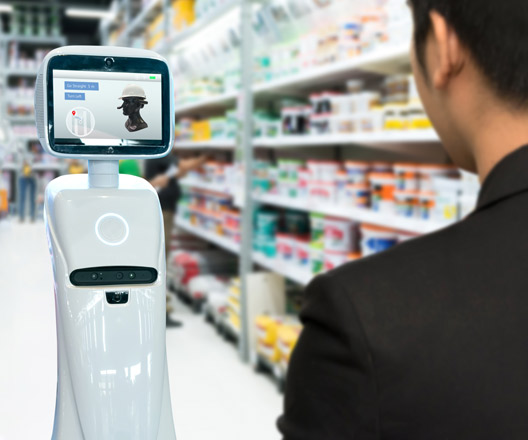
Listen to this blog
Public awareness of the term “artificial intelligence” is at an all-time high, but beyond vague (and at times frightening) connections with robots and computers, many people aren’t as familiar with what AI actually is, or what it might possibly become.
Precursors and early efforts
While the term “artificial intelligence” was coined in the 1950s, people have been dreaming of artificial minds and thinking machines for several hundred years. From various humanoid automata in royal courts around the ancient world to the Czech play, R.U.R., which gave us the term “robot”, people have tinkered with ideas (or actual machines) that aim to mimic or replace humans in various capacities.
The invention of the digital computer at the dawn of the information age in the 20th century gave people a glimpse of things to come. Business could buy machines that performed clerical and accounting tasks in a fraction of the time that a calculator-wielding human could manage, and these machines quickly entered our offices and homes. Researchers began to explicitly model human decision making (albeit poorly) using lists of predefined rules of the “if this happens, then do that” variety. This tradition in AI proved a colossal failure because it was nothing like the way humans actually solve problems, and was later termed “good old-fashioned AI” (GOFAI).
Machines that learn
Later on, AI researchers discovered techniques that allowed computer software to modify itself based on the feedback it received – in other words, computer programs began to learn from their experience. These techniques vaguely mimicked the way that neurons in human and animal brains operate, and were misleadingly named “neural networks” by some, and “connectionist networks” by others. While still a long way off, researchers had begun inching in the right direction, towards the goal of creating a machine in the image of humankind. While much more sophisticated, the commercial AI available today emerged from these research efforts.
“Strong” vs. “Weak” AI
It’s important to note here that these advances were being made in two different kinds of research programs. On the one hand, some scientists were focused on realizing the dream in its entirety: generalized artificial intelligence. In other words, they wanted to create a machine that could understand the world, human language, and everything else at least as well as a human could. They didn’t want a machine that could only beat a grandmaster at chess (which has been accomplished) or beat the best human contestants at “Jeopardy!” (also done). They wanted something that could have a deep conversation with the best minds on the planet, expand the reaches of scientific knowledge, and help us solve the multitude of challenges that we face in ways that we haven’t even imagined yet. These researchers were engaged in the pursuit of “strong AI”.
On the other hand, there were many other researchers (most, I might argue) that were working on “Weak AI”. They were looking for a way to enable machines to succeed at specific tasks that only humans had been able to accomplish so far, like transcribing an audio recording, identifying an object in an image, or recognizing handwritten text. These are the kinds of technological advances that we have begun to hear about every day, from self-driving cars to phones that can reserve a table at our favorite restaurant without our help. The point is, the AI that you encounter in the news these days isn’t the scary, super-genius, take-over-the-world kind of AI that might arise from the work of strong-AI researchers. Instead, it’s purpose-specific weak AI that isn’t designed to take over: it’s designed to enhance our lives.
AI as it is today
So what does the current uptick in commercially available weak AI mean for the average business? Much more than you think.
You don’t have to be a tech company to take advantage of solutions powered by machine learning (a common weak-AI concept) designed to summarize large amounts of data and give you a quick answer to important questions. You might have hundreds of job applications to pore over in the search of the ideal person for an open position in your office. A machine learning solution can assess every job application in a few minutes and give you a 0-to-100 confidence rating for each candidate. If your business has a list of thousands of potential customers that you could submit a project proposal for, machine learning can tell you which ones you’re best-equipped to pursue, will yield the highest ROI, or are most likely to accept your proposal.
And that’s just one type of application of machine learning technology – AI can help you decide which products to sell in each of your stores, how much inventory to keep, and when to schedule your replenishment orders with each vendor. AI can simplify the way your customers engage with customer service and support representatives. A dizzying number of solutions are already out there, no matter whether you sell socks, stocks, cupcakes, insurance, or smartphones.
If you’re looking for a full-service technology partner to help you determine the many ways that AI can boost worker productivity, simplify your daily operations, streamline supply chain management, and prioritize tasks for each of your departments, please contact Visionet Systems today. Our machine learning experts will walk you through multiple use cases and assess your existing business processes to find solutions that will give you significant and immediate ROI.
The game-changing effects of AI are already here… is your business ready to start moving at the speed of thought?




